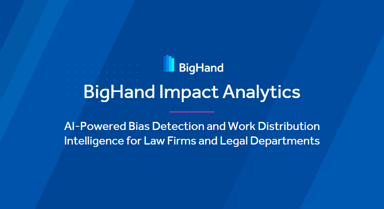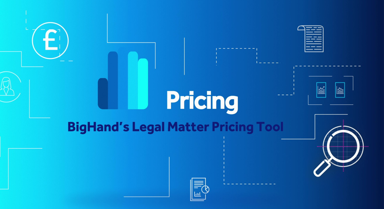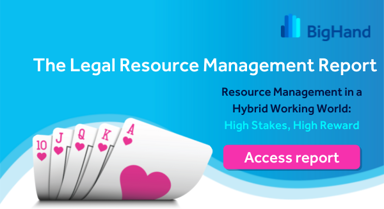Holly Burke:
We are able now, really for the first time to look at our diversity, equity, and inclusion program with new analytics eyes on
Tamara Morgan:
The leadership and support of our General Counsel, Mark Zimmerman, within the Kaiser Legal Department, has really taken that commitment and that vision of equity, inclusion, and diversity directly to the legal industry. Our initiative is just a natural progression of what we've been doing for the last 10 years. We've had to build up to this point, we have had to set expectations and started gathering data and embedding EID and our guidelines with outside counsel and our vendor agreements. We've been slowly moving to that point, or it felt like it was very slow, and putting it in our RFPs.
Our expectations along the way and it positioned us to use data to develop this programmatic approach. Building on those tools that we already had. What's different, though, about what we're doing is an explicit recognition that we, Kaiser and our outside counsel firms, we're shooting for the same target often. It seems like when you're on this quest, meet those diversity, it seems like your adversaries are in a war, and in fact, we're all having shared goals. So our initiative is really very intentionally collaborative with our outside law firms looking at their goals and ours and coming together to partner on how can we move forward based on the data. And sometimes the data that we're able to bring to them is, you know, we're looking at it from a different perspective than they were.
So the pilots have been really well received. The firms have brought innovative solutions to introducing diverse lawyers to the Kaiser team that aligns with our business needs, and then we've been involved in talent development plans with their teams. So we think this, or we know, that we're going to use this type of evidence-based program as a cornerstone of our EID strategy moving forward because it combines transparency and collaboration and communication and scale in a way that we think will position us to continue to be a leader and propel change in this area.
Catherine Krow:
We were fortunate enough to have worked with Kaiser on their outside counsel guideline update, Which laid the foundation for everything they're doing because it embedded a very forward-looking data strategy along with very clear messaging about how important diversity and inclusion are to Kaiser. So this was a natural next.
But before you decide where you're going to go, you need to understand where you are. And so we worked with Kaiser on ensuring they had the data they needed and then creating a baseline and then a baseline of diversity across a pilot set of firms. The tools that enabled Kaiser to take the ball and run with it. So playbooks and other facilitating tools that allowed the internal attorneys to have challenging conversations or great conversations or any conversations around data with their firms and promote mindful staffing. As Tamara said, this was a very collaborative approach and I just want to reiterate that that is very much in keeping with the Kaiser culture of partnering with their law firms to further shared goals and that's one of the things that's so impressive about them.
Jamaal Thomas:
Talk about some of the key takeaways that we've gathered over the past year, I guess a year, and some change. First kind of recognizing that you can't improve what you don't measure. There is a concerted effort to really hone and refine timekeeper data collection. I'm happy to be able to report that we have now reached a point where we have collected 99% of diversity timekeeper data in our pilot firms and that's up from 60% before this work had started. That's important because this is really the beginning of, and has proven to be the beginning of, conversations with the firms that are in the pilot about these specific challenges that they face with regards to diversity. And it's hoped that as we roll this out that this is going to be or will be the foundation of similar conversations with all firms that do Kaiser work. So it is a beginning not an end, but it is an important beginning.
We were also heartened to see really enthusiastic engagement from the pilot firms and kind of leaning into the numbers, which the diverse numbers, which on the whole are good but there is room for improvement. And I think that there is nobody here would challenge that there's room for improvement across the legal industry, with respect to or in the context of minority ethnic and racial minorities being involved in KP's work. We also recognize through conversations and looking at the analysis, looking at the data, that there's an inflection point in a lot of in a lot of associate careers, that seems to come up at the three-to-six-year mark. Where we're seeing attrition hit associates as a whole, but then there's an outsized impact on diverse associates where we're losing and firms are losing a lot of diverse associates when they hit that three to six-year mark. So we've had conversations and we will continue to have conversations about how we can recognize this as true. How can we partner with our firms to help address that retention gap? Because that retention gap then is amplified in the lack of diversity at higher firm leadership levels. So with that, I'm going to turn it back over to Catherine, who is going to talk a little bit more about that data.
Catherine Krow:
What I'm about to show are illustrations of common patterns that arise across the industry. This is not live data. Quantitative data analysis is a great starting point, it can show you where you have major areas of problem but it can also be a little bit misleading. Sometimes the data will show great strong representation on hours or spend basis, but when you start digging into phases or tasks, occasionally, more than occasionally the picture can flip.
Oftentimes, timekeepers will code their data into broad categories, analysis, and strategy are one of the most common examples. And when that happens, it makes the work look fair. Most of the work is being allocated to strategy and everybody's doing strategic work. When that data is normalized and put into buckets based on the time narratives and the UTBMS codes, the work allocation changes. And that's when you can start to really see unusual and potentially disturbing patterns of work allocation.
Kerry Freeman:
Thank you, Catherine, for sharing all of that really illuminating data and also for the hard work that Digitory, you and Aurelia, and the whole team, have done to set us on this path and giving us that data as the anchor to drive our work.






